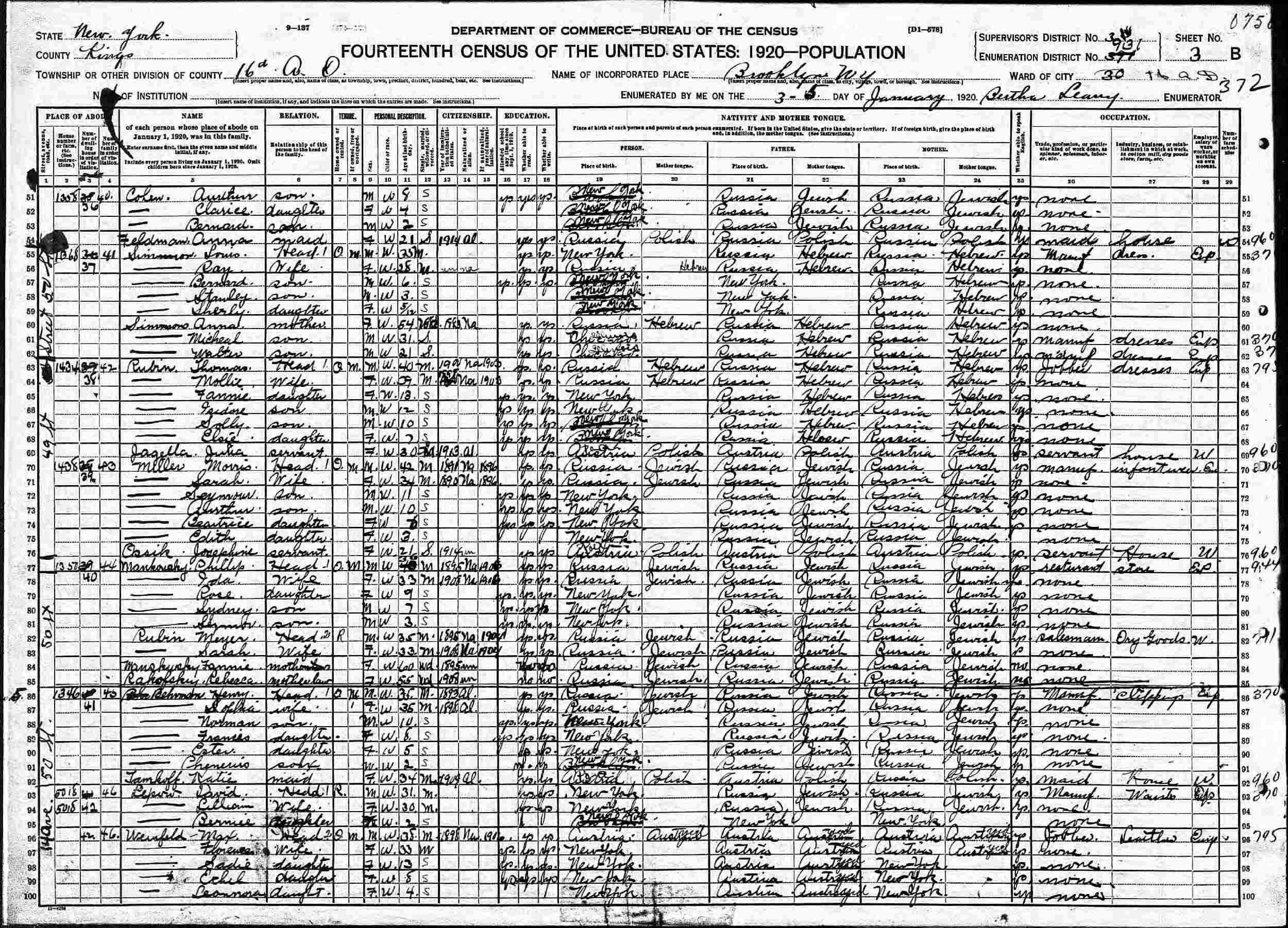

Much appreciation is offered to the dedicated group of volunteer transcribers. Again, decisions were made as faithful to the census recording as possible. In many cases, it was felt that the error was made from the original source to Catherine Graham’s enumeration. An attempt was made to remain faithful to the spelling as handwritten rather than allow common sense to make the decision. That being said, this re-transcription will still contain errors. Therefore, there were considerable opportunities to “understand” her handwriting and make judgments in discrepancies that were hopefully accurate. Much to the favor of the re-transcription project, the entire institution was enumerated by one person, namely, Catherine Graham. As such, she could not be located in a typical soundex search.

One such example is my great grandmother, Gussie Gross, who is enumerated on page 27 line 2 and transcribed as Gussie Guss. After debate, consultation, and searches, it was determined that there were significant errors in the transcription which inhibited researchers. When approximately half of the data was transcribed, released a transcribed database and the images on their subscription website. Some census columns were deconstructed into multiple columns to permit better search capability and analysis of the data. The only way to find a specific person was to scroll through microfilm for the 121 pages of the census representing 6017 lines of census data that includes patients and resident employees.Ĭonducted under the auspice of the Jewish Genealogy Society of Long Island, volunteers were solicited to transcribe the census into an Excel spreadsheet containing each column of data. When this project commenced, there was not an index to names for those enumerated in the New York State 1925 census. In 1996, New York State closed the hospital as part of the restructure of the care of psychiatric patients.


The 1925 census represents the hospital during a peak period. The patients are of significant interest to researchers. Facilities increasingly expanded to the extent that they functioned as a small self-contained city including a Long Island Railroad spur, farm, firehouse, etc. An 1896 Legislative Act transferred New York City Asylums to New York State under the name Manhattan State Hospital at Central Islip. Opened in 1889 as the New York City Farm for the Insane, Central Islip State Hospital (CISH) became the largest psychiatric institution in New York State and perhaps the world. Central Islip State Hospital 1925 NYS Census Project Background


 0 kommentar(er)
0 kommentar(er)
